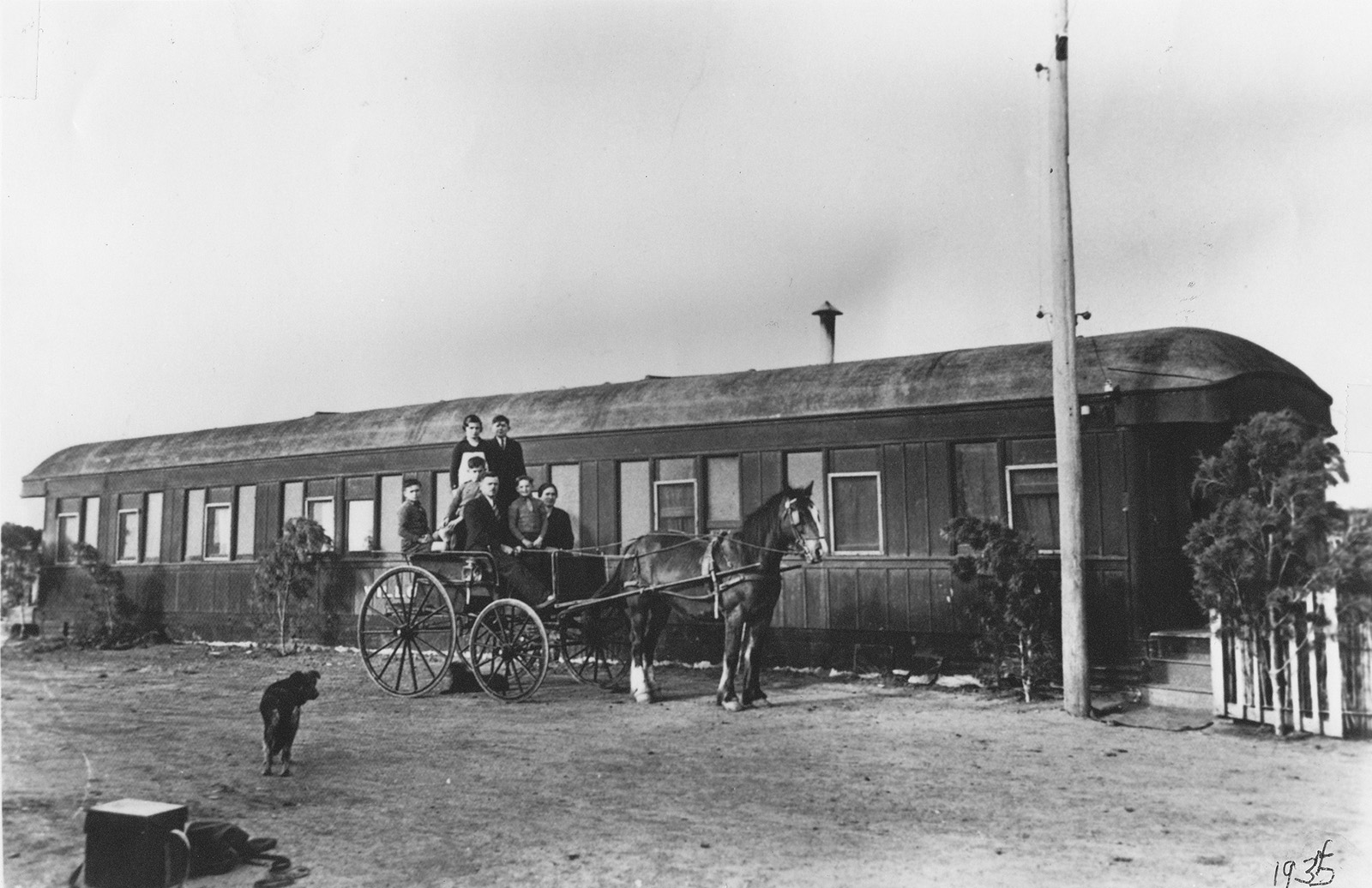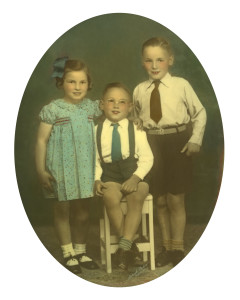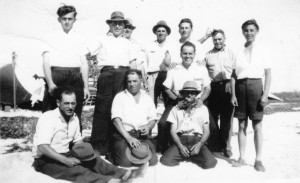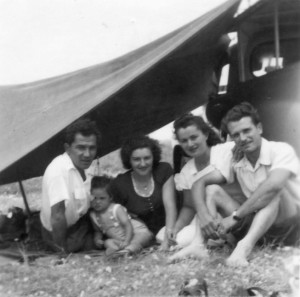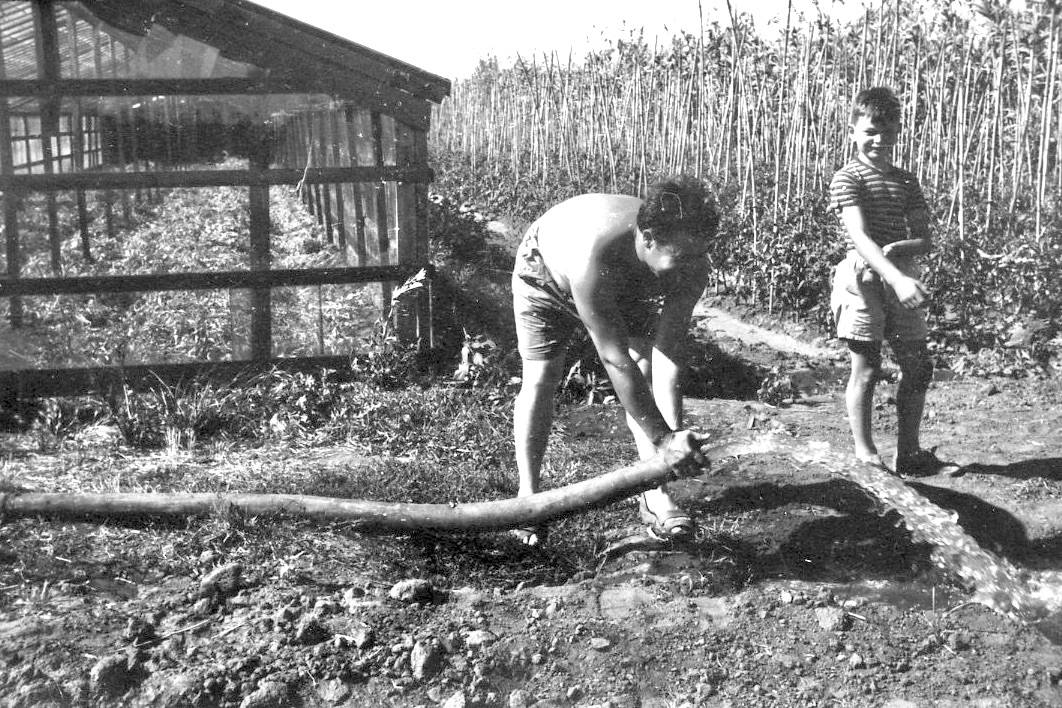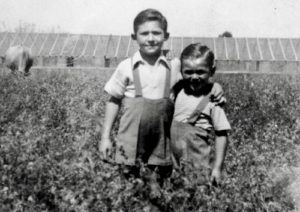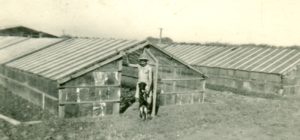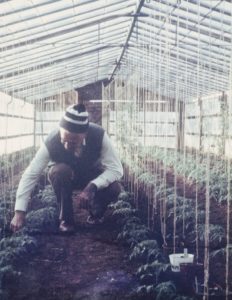We are recommencing the biographies of Veneto market gardener families. The information is taken from the oral history interviews recorded with family members over the last 12 years. This post features the Tonellato family
Two photos taken in 1935 show the train carriage which was home for the Tonellato family until 1954. The carriage had been built for the 1927 Royal visit of the Duke of York (later King George VI) and Duchess of York.
Secondo Tonellato was born in 1893 in Caselle d”Altivole, Province of Treviso and arrived in Adelaide on 27 August 1927 on the “Citta’ di Genova.” Giovanni Santin, a neighbour from Caselle di Altivole and Angelo Piovesan from Ponzano Veneto were also on that ship. Secondo left behind his wife, Elisabetta and five children. The youngest, Orlando, was born after his father left Italy.
When he arrived in Adelaide, Secondo was 34 years old and in the first years he worked as a labourer building roads at Karoonda. Then he leased land on Frogmore Road adjacent to Angelo Piovesan. He worked hard, and after eight years was able to pay the fares for his family to join him. Elisabetta and the children Lui, aged 13 years; Rosina, 12 years; Alberto, 10 years, Lino, 8 years and Orlando or Nano, 7 years, arrived in Port Pirie in 1935.
Two years later Secondo and Elisabetta took Assunta Panazzolo, the daughter of Secondo’s sister, into the family. She was just three-months old and her mother, Assunta, had died soon after giving birth to her baby.
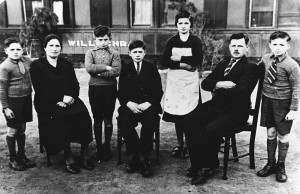
Oralando, Elisabetta, Albert, Luigi, Rosina, Secondo, Lino.
The Royal carriage or the vagon, as the veneti called it, solved the problem of accommodating the family. Inside there were five bedrooms, a saloon, kitchen and a shower room. It was ornate with burgundy velvet upholstery, polished dark wood and etched glass windows. Many people interviewed for the project remembered the beauty of the vagon. Terry Judd, daughter of Lino and Rosanna Tonellato and a granddaughter of Secondo and Elisabetta, recalled the fun of playing in the vagon as a small child and pulling down the seats in the corridor.
Secondo leased land between Frogmore and Findon Roads and the family worked in the market gardens. At first Secondo grew outside vegetables to sell at market and gradually bought glasshouses and grew tomatoes. During World War II, the family had a contract with the Army to grow carrots, cabbages and potatoes.

Front: Secondo, Assunta, Elisabetta.
As the first three of the family married, they acquired their own market gardens. Secondo, Lino and Nano, the youngest sons, bought 10 acres on Findon Road in 1951.
After they built their first house, Secondo and Elisabetta provided accommodation in the vagon for newly arrived Italian migrants who worked in the western suburbs. When it burnt down in the 1960s, the Veneto community was sad.
Secondo was a market gardener for more than 40 years, and worked the land and glasshouses with his son, Nano, until 1969. Lui and Italia Tonellato and their son, Adrian, worked the land on Frogmore Road until the 1970s.
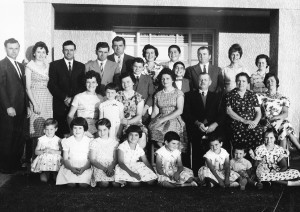
Elisabetta died in 1972, followed by Secondo, in 1973. Lui died 11 August 2005, Rosina died 5 July 2009, Albert died 13 April 2010 and Nano died on 27 August 2009.
You can listen to interviews recorded with members of the Tonellato family on the website: Albert Tonellato; Mary Tonellato; Lino Tonellato; Assunta Giovannini nee Tonellato and Adrian Tonellato
If you are interested in reading an article about the Tonellato family that was published in the Catholic magazine, “Il Messaggero” in June 1986, click here.
Madeleine Regan
26 January 2020
How to read the Tonellato article below on mobile devices
![]() To view the article below click on the blue text and use the control on top of the transcript.
To view the article below click on the blue text and use the control on top of the transcript.
The – + signs enlarge or decrease the document. The arrows take you to the next or back a page. The controls also show you what page you are on.
View on full screen
Full screen is available on your desktop computer and some mobile devices. To view the transcript on a full screen click the four arrow link .![]()
To return to the article click the four arrows at bottom left of the screen.![]()
Ricominciando di nuovo con le storie delle famiglie pioniere venete. Questo blog parla della famiglia Tonellato.
Le informazioni di queste storie sono state raccolte dalle interviste di storia orale fatte anni fa.
Due foto scattate nel 1935 mostrano la carrozza ferroviaria che ospitò la famiglia Tonellato fino al 1954. La carrozza, o ‘vagon’ come la chiamano i veneti, era stata costruita nel 1927 per la visita reale del Duca di York (in seguito re Giorgio VI) e della Duchessa.
Il pioniere Secondo Alberto Tonellato nacque nel 1893 in Caselle di Altivole. Arrivò ad Adelaide il 27 agosto nel 1927 con la nave ‘Citta’ di Genova’ accompagnato da Giovanni Santin di Caselle di Altivole e Angelo Piovesan di Ponzano Veneto. Secondo lasciò dietro sua moglie, Elisabetta ed i suoi cinque figli. Orlando, il più giovane, è nato pochi mesi dopo la sua emigrazione.
Nei primi anni, Secondo lavorò come manovale costruendo le strade di Karoonda, distante 145 chilometri sud est di Adelaide. Anni dopo affittò terreno in Frogmore Road circa otto chilometri d’Adelaide. Il terreno era adiacente ad Angelo Piovesan. Secondo lavorò duro e finalmente è stato possibile per lui richiamare sua moglie e figli dall’Italia. Il 14 giugno 1935 la moglie, Elisabetta, e i figli arrivarono ad Adelaide. L’èta dei figli era: Lui, 13 anni; Rosina, 12 anni; Alberto, 10 anni, Lino, 8 anni e Orlando, 7 anni. Nel 1937 Secondo e Elisabetta richiamarono Assunta Panazzolo, a far parte della famiglia che era la nipote di Secondo. A quel tempo Assunta aveva solo tre mesi perchè la madre che viveva a Broken Hill morì dopo una settimana dalla sua nascita.

Orlando, Elisabetta, Alberto, Luigi, Rosina, Secondo, Lino.
La carrozza reale ha risolto il problema di abitazione della famiglia. Il ‘vagon’ era ornato con tappezzeria di velluto rosso, legno scuro e vetro inciso nelle finestre. Molte persone intervistate per il progetto si sono ricordate della bellezza del ‘vagon.’ Terri Judd, la figlia di Lino e Rosanna Tonellato, si ricorda quando aveva 4 o 5 anni, e giocava a mettere giù i sedili nel corridoio.
Nei primi anni Secondo aveva circa sei acri di terreno tra Frogmore e Findon Roads. Secondo coltivò per prima le verdure nell’orto da vendere al mercato. Gradualmente comprò le serre per coltivare pomodori. Tutta la famiglia lavorarono come agricoltori. Durante la seconda guerra mondiale la famiglia aveva un contratto con l’esercito Australiano di coltivare carote, cavoli e patate. Nel 1951, Secondo comprò il terreno che prima avevano affitato con Lino e Orlando, i figli più piccoli.

Front: Secondo, Assunta, Elisabetta.
Secondo era un agricoltore per di più 40 anni e lavorò la terra e le serre con suo figlio Orlando (Nano) fino al 1969.
Il primo figlio, Lui, lavorò come agricoltore in Frogmore Road con sua moglie, Italia, e il loro figlio, Adrian che lavorò con i genitori fino al 1980 circa. Secondo, Italia e Adrian erano quasi gli ultimi agricoltori a lavorare le serre in quella zona.

La moglie, Elisabetta morì il 30 agosto 1972, seguita da Secondo il 21 luglio 1973.
Lui Tonellato morì il 11 August 2005, Rosina, il 5 July 2009, Albert, il 13 April 2010 e Nano, il 27 August 2009.
Le seguenti persone sono state intervistate per questo progetto: Albert Tonellato, Mary Tonellato nee Zoanetti, Lino Tonellato, Assunta Giovannini nee Tonellato,
Adrian Tonellato
Se volete leggere l’articolo sulla famiglia Tonellato del Messaggero, pubblicato giugno 1986, clicca qui.
Madeleine Regan
il 26 gennaio 2020
